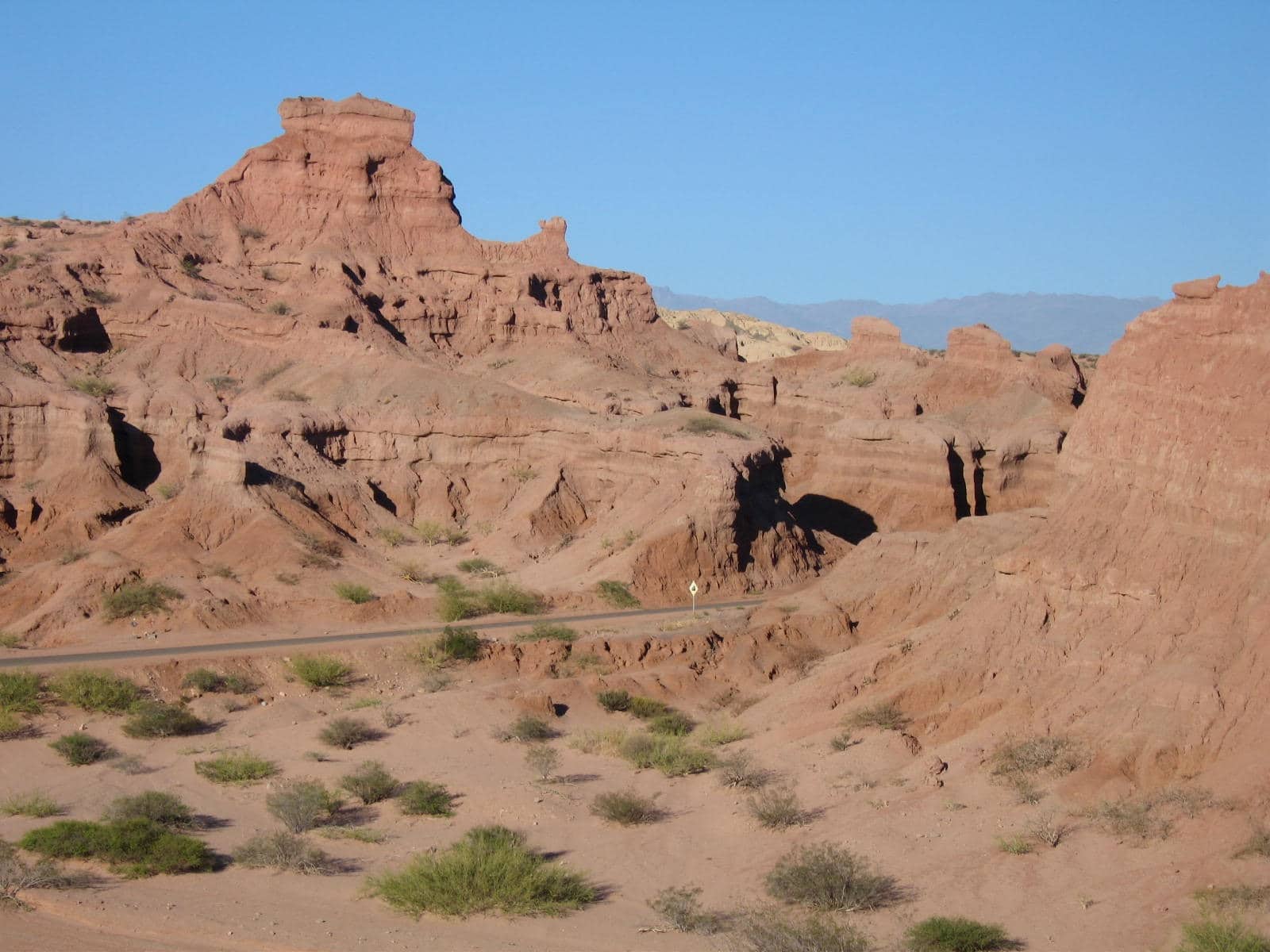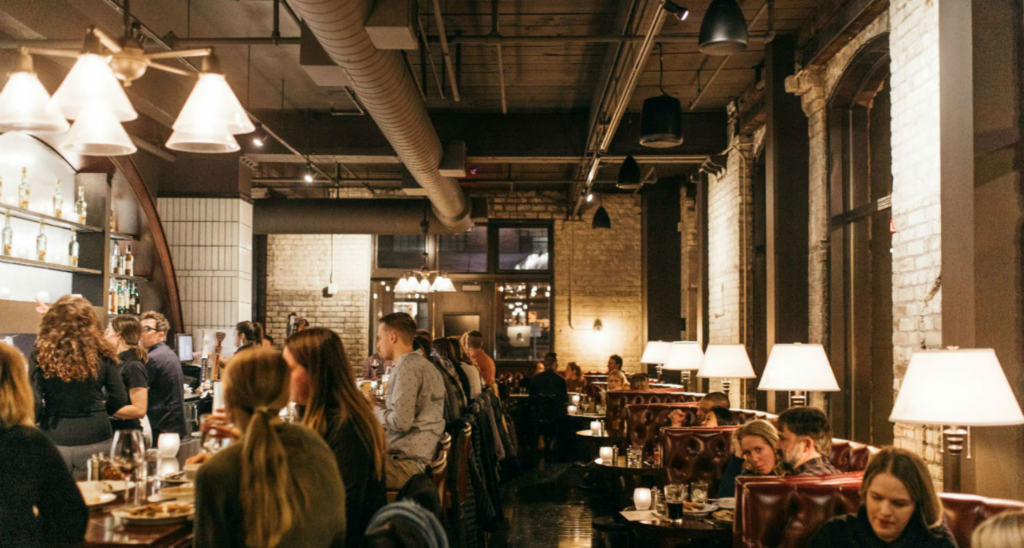January 10, 2016
From meat to mountains to Malbec, from cloud forests to colorful canyons, from leather to lakes to landscapes, Argentina is a series of beautiful and complicated contrasts.
Like that alliteration?
Okay, enough with the travel-brochure crap.
Why Argentina?
- It doesn’t have the density of people of many other places (i.e. Europe).
- Lots of wine.
- Buenos Aires is essentially a buzzy European city hiding out in South America.
- It’s easy to get to. It’s a long flight but usually overnight, and the time of day is close to concurrent mainland USA.
- The exchange rate tends to be ridiculously good. (Yes, we’re taking advantage of a somewhat unstable economy.)
- Lots of wineries. (Hey, it’s not the same as “lots of wine”, so it deserves its own bullet.)
- Might be a pro or con depending on your personal taste, but it’s certainly easier to eat in Argentina if you like meat. Big meat. Grilled meat. Lots of big, grilled meat.
- If you don’t love empanadas, either you haven’t had a real one or something is seriously wrong with you.
- Prompt arrivals are not expected. It’s nice for us Type-A people to have an excuse to be late once in a while.
- Meals are for socializing, eating, and drinking, not phones or business.
Where in Argentina?
We really like three areas:
- Salta: In the north, close to the borders of Paraguay, Bolivia, and Chile.
- Mendoza: In the western central part of the country, close to the Andes mountains and Chile, and known for its wineries.
- Patagonia: Technically the entire southern half of the country. And it gets more remote the farther south you get.
Where do you start?
Buenos Aires. Always start or end in BA, no matter where else you’re traveling. It’s the perfect, complete contrast to all the other parts of Argentina. The city is broken into distinct neighborhoods. A few tips:
Recoleta is the high-end, self-proclaimed “fashionista” area. The famous cemetery is in this ‘hood, where you can visit the grave of “don’t cry for me” Eva Peron. The hotels are big dog (like Alvear Palace, Algodon Mansion, Park Hyatt) in the Recoleta, and the luxury shops are abundant.
Our favorite place to stay and wander is the Palermo neighborhood. Palermo Viejo, Palermo Soho, Palermo Hollywood. It’s filled with artisan shops, small hotels, neighborhood restaurants, and cafés. The hotels are smaller, more B&B-like and a little quirkier, like Home and Legado Mitico. Recoleta is the high-end, self-proclaimed “fashionista” area. The famous cemetery is in this ‘hood, where you can visit the grave of “don’t cry for me” Eva Peron. The hotels are big dog (like Alvear Palace, Algodon Mansion, Park Hyatt) in the Recoleta, and the luxury shops are abundant.
Our favorite place to stay and wander is the Palermo neighborhood. Palermo Viejo, Palermo Soho, Palermo Hollywood. It’s filled with artisan shops, small hotels, neighborhood restaurants, and cafés. The hotels are smaller, more B&B-like and a little quirkier, like Home and Legado Mitico. San Telmo is the ancient area of the city, best for its antiques markets and tango shows. Not our favorite to stay, but definitely a great to visit.
Monserrat is the historic and traditional neighborhood with cathedrals, main plazas, and grand buildings. Just near Monserrat is Puerto Madero (the port, for those language-challenged). Faena Universe is the hotel here, which is also a great place to see a tango show.
Just don’t go see a tango show with anyone like Larry from Texas. During this intimate, intense show, when one of the dancers whisked off her top, Larry loudly declared “Boobs!” in the small room. And we wonder why Americans are considered buffoons when abroad?
Restaurants are everywhere. Must-dos include trying the traditional old-school grilled-meat restaurant experience (like La Cabrera, which is pretty touristy at this point).
Try Las Lilas on the water in Puerto Madero. Also popular with tourists, but this one actually has a reason.
Eat as many empanadas as you can. Every meal, every variety, every day.
If you’re heading through BA directly to another city in Argentina, the international and domestic airports aren’t anywhere near each other (because that would make way too much sense), and the traffic is intense. We like to have a breather of a night or two in BA on both ends to avoid the 1 – 2-hour drive across town from one airport to another.
Off to Salta
This is probably the greatest secret in Argentina. Everyone knows Mendoza and Patagonia, but not as many know Salta.
We flew into Tucuman (San Miguel de Tucuman to be exact). San Miguel is the most densely populated city in the whole region. It’s a city, interesting for one day, but not worth much more. From there, you can head to archaeological sites like Quilmes, an indigenous settlement dating to the 9th century.
We were then signed on to a bicycling trip with Butterfield & Robinson from there to Cafayate, to Salta, to Purmamarca. The contrasts in this one-week period were amazing. We went from wineries (Salta is a fast-growing wine region), and dramatic red rock formations, to lush landscapes and cloud forests, to Humahuaca Canyon, near Purmamara, which looked like a 7-year-old colored it using the full 64-pack of Crayolas.
We passed through the Calchaqui Valley to the Cafayate and had picnics among the abundant vineyards, bicycled through canyons and past the Tropic of Capricorn sun dial, hiked in rock formations, and ate king-worthy meals almost all cooked over open fire—and all including grilled meats. We learned how to chew coca leaves from our Argentinian and Bolivian guides. We caught sights of the local everyday life of laundry and chickens. The towns are small, quaint, cultural, and approachable. Salta is a small city, with great energy and an overwhelming night market.
Hotel highlights were Patios de Cafayate (also a winery), Finca Valentina (closer to Salta), and El Manantial del Silencio, outside of Purmamarca. There are also a variety of city hotels in Salta.
Mendoza
Mendoza means Malbec. Just over the Andes from Santiago, it is a heavy production wine region (with lots more than Malbec), with estancias and wineries aplenty.
The wineries aren’t like in California, where you can just stop in or hop from one to another. Only some are open to the public, but with others, you arrange for tastings or go for lunch or dinner if they have a public restaurant. Hotels are not traditional; they are mostly rooms within the wineries and estancias (like Salentein, for example).
We did stay in one pretty incredible place called Cavas Wine Lodge, literally built in the middle of the growing grapes (and only 20 minutes south of the town of Mendoza).
The architecture is mostly modern, especially at the wineries. While wineries in the US strive to replicate Italian villas or French chateaus, the ones in Argentina are more modern, stylish, clean, and contemporary, with huge windows and big expanses of space.
The cooking is all over grand open fires and grills. Frances Mallmann, an internationally known Argentine chef known for cooking with fire, comes by it honestly. (Check out the mother of all outdoor grills at 1884, his restaurant in Mendoza.)
In addition to 1884, we had some great dining experiences, like a private lunch on the patio at Piattelli starting with a new definition of charcuterie and followed by succulent grilled meats. Our meal at Zuccardi (a pretty big winery internationally) included all the great Argentinian hits, from meats and cheeses to empanadas to more grilled meat. It’s still up there with one of our more memorable meals ever.
We also headed toward the foothills of the Andes with a fly-fishing guide to try our hand at fishing in the small streams. Every once in a while, a teeny tiny guy would jump on our line just to boost our egos, but it was hardly our most successful experience. The hiking along the stream was definitely the real highlight.
Much like everywhere in Argentina, our shore lunch was all animal, all the time. And all parts of the animals. Why is it that when you’re fly fishing for fresh fish, the guides bring animal intestines to grill by open fire alongside the river and lake?
The Chevy Chase moment of our trip was our first-hand experience with cash machines in Argentina. We’re used to getting a fly-fishing guide through our hotel, which means the cost of the trip is usually on our hotel bill (aka credit card). Midway through the trip, this guide informed us of his cash-only policy. No problem, right? We’ll stop at a cash machine.
Just try to extract roughly $800 from cash machines in small-town Mendoza. Not so much. Some machines gave us each a hundo as a limit, some gave us a meager $20. Others were out of service or out of cash completely (because, it’s Tuesday and they rarely have cash on Tuesdays. Sometimes happens on Fridays or Sundays, too).
Why go to Mendoza?
If you love the idea of the winery and estancia experience, and if you want to pair visits to both with horseback riding or fly fishing. The countryside is expansive and beautiful, even if it’s not nearly as dramatic as Salta or Patagonia. Oh, and the Argentine’s keep all the good wine for themselves. You’ll have some fantastic wine here.
Patagonia
My brother dreams of a land with no people, no cars, and lakes and fishing as far as the eye can see. (sounds like a real social guy, doesn’t he?) My brother dreams of Patagonia. And he’s mostly right.
When you get there, even in the more populous northern part of Patagonia, it’s a bit like you’ve reached the unspoiled end of the earth. It’s picture book. The lakes (lagos) are crystal clear, and surrounding mountains stand protecting them.
We started in San Carlos de Bariloche (commonly called Bariloche), a town on Lago Nahuel Huapi, a glacial lake surrounded by the snow-crowned Andes. It’s known for its Swiss alpine architecture and its chocolate (apparently the Swiss loved it here because it reminded them of home).
It’s also a popular base for hiking and skiing the nearby mountains and exploring the surrounding Lakes District, which is what we did.
The town isn’t much to explore, other than to buy chocolate in the shops lining Calle Mitre, the main street, so we headed out of town to stay at a lovely lake hotel between Bariloche and Villa De Angostura, Las Balsas. We used that as our base for the first few days of hiking and fly fishing (both river and lake). We had two fishing trips in Patagonia. One on a skif boat on the Rio Limay surrounded by mountains, with our guide rowing almost the entire time. Yet another shore lunch, but this one in more of an indoor/outdoor hut/restaurant with a humongous outdoor grill cooking, you guessed it, meat. We sat on a table by the river watching the horses graze in the foothills of the mountains.
Our fly fishing on the lake was the most scenic and remote we’ve ever seen. We took a fast boat about 40 minutes to a place completely untouched by humans and fished in the clearest and cleanest water in total quiet and stillness.
After getting into full relaxation mode, we joined Backroads for a bicycling trip north through the Seven Lakes district.
The Llao Llao resort outside of Bariloche was the start (Google “Bariloche” and that’s often the image you get of the hotel on the island. It’s incredibly pictureseque). It was a perfect place to enjoy champagne on our balcony and watch the rainbows.
From there, we bicycled on the road (there aren’t many roads in Patagonia. There’s really only one, Paso International Cardenal Samore, for everyone and everything in every size to share), making our way to the charming tourist/resort town of Villa de Angostura. We bicycled into the hills to discover waterfalls, and we bicycled to the border of Chile.
Then it started to rain. Our beautiful uphill to Chile became a cold, rainy downhill to Angostura. But the empanadas and wine at lunch helped erase the memory.
After staying at Correntoso Lake & River Hotel, with another gorgeous lake view, we went back to our one road on our way to San Martin de los Andes on Lago Lacar.
San Martin as a town was the highlight. As you’re descending down the mountain, you can see it perched on the side of the lake. Out of here was some of the most incredible hiking you can imagine. Oh, and we found another wood-fired pizza empanada place, (big surprise) Pizza Cala de los Andes. Worth a visit, even two days in a row.
For us, instead of making our way back on the one road to the Bariloche airport, we flew out of San Martin back for a few nights in BA.
Why Patagonia? Sheer beauty, peace and quiet, skiing, hiking, kayaking, and fishing. No people, one road. My brother would love it.



